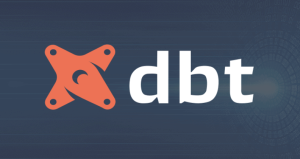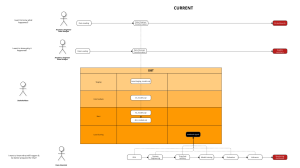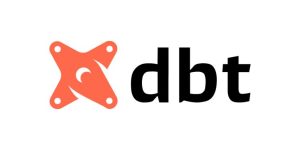
In a world where the amount of data produced grows exponentially, federal agencies and IT departments face ever-increasing demand to tap into the value of enterprise data. With the potential to increase business value and overall mission effectiveness, many agencies are seeking new and innovative ways to turn organizational data into valuable insights.
Making sense of the technologies, tools, and, techniques required to derive insights from such vast amounts of data can seem overwhelming. However, a modern enterprise analytics solution often doesn’t require a complete reboot of previous investments.
By investing in a modern business intelligence (BI) platform that complements existing business intelligence systems, businesses can expand their range of insight-driven capabilities. With this investment comes a shift in data ownership from IT to business groups, giving more users the power to answer any question, with any data, at any time.
By implementing a modern BI platform, federal agencies can use analytics to more effectively achieve mission objectives such as protecting and maintaining the health of the American people, keeping the country safe and secure from foreign and domestic threats, and preventing waste, fraud, and abuse of government resources.
Traditional Business Intelligence Platforms
The traditional Business Intelligence platforms of the past two decades have chiefly succeeded in providing users comprehensive historical reporting and user-friendly ad-hoc analysis tools.
While users have been able to gain tremendous value from traditional platforms for historical reporting capabilities, more users now require data analyses techniques that require direct access to data without relying on IT specialists.
The following challenges associated with traditional BI solutions have been highlighted by federal agencies in the analytics space:
Today’s advanced BI users don’t want to wait to get answers to their most complex business problems. More users require self-service capabilities in to relate and analyze specific data sets based on their own understanding, at any time, for any purpose.
Historical reporting capabilities only provide one piece of the puzzle: insight into what happened in the past. To truly become data driven and forward thinking, businesses are looking to predictive analytics – or insight into the future. With predictive models, businesses can use patterns and forecasting to gain actionable next steps based on their data.
– Traditional BI Platforms have largely been focused on structured data, but today, users need the ability to also view and analyze semi-structured, unstructured data, and third party data. The sheer amount of information produced has skyrocketed in recent years, in part due to the Internet of Things (IoT), new data mining techniques, and the proliferation of sensors and other automated data collection tools. Data scientists and advanced BI users now require access to untapped data in various formats, where they have the ability to create their own algorithms and blend data types, and where insights are available on demand for rapid and accurate decision-making. Many organizations that lack the people, processes, and technology necessary to expand their data analysis capabilities to the next level become discouraged.
These challenges require an analytics platform and strategy that goes beyond the breadth of traditional BI platforms.
Modern Business Intelligence Platform
While traditional BI platforms often provide analyses that answer the question “What happened?” in a historical perspective, modern platforms have the ability to answer the question of “What is happening, what will happen, and why?”, offering the ability to not only obtain and monitor a continuous pulse of the organization through rapid analytics, but to accomplish mission objectives through predictive analytics.

Integrating Traditional and Modern BI Platforms
Data platform changes are necessary to shape the foundation for an enterprise-wide data
transformation and organizations are rightfully wary of scrapping their entire IT architecture and starting fresh. Data warehouses continue to play a key role in existing data platforms, providing the thoroughly cleansed, organized, and governed data needed for most businesses.
The data warehouse allows business executives and others without deep technical knowledge to gain insights from historical data with relative ease. This data, sourced from the data warehouse, is highly accurate due to IT scrubbing, rigorous testing, and thorough knowledge of layers of the data by IT specialists.
However, the challenges associated with traditional BI are creating demand for augmenting an EDW with another form of architecture optimized for quick access to ever-changing data: the Hadoop Data Lake.
Organizations looking to modernize their analytics platforms have started to adopt the concept of data lakes. Data lakes store information in its raw and unfiltered form, be it structured, semistructured, or unstructured.
As opposed to the stand-alone EDW, data lakes themselves perform very little automated cleansing and transformation of data, allowing data to therefore be ingested with greater efficiency, but transferring the larger responsibility of data preparation and analysis to business users.
Using Hadoop’s distributed file system (HDFS), data lakes offer a low-cost solution for efficiently storing and analyzing many types of data in its native form. A data lake solution coupled with a data warehouse defines the next generation of BI and offers an optimal foundation for data analysis.
About Joon Solutions
Joon Solutions specializes in deploying the modern data stack for companies globally. Boasting results 30x faster and at 50% of the cost vs more traditional firms. Highlighting company wide challenges and opportunities resulting in tremendous growth and operational efficiency.
- What the heck is data analytics? Explain it like I’m five. - June 8, 2022
- Best Practices for Managing Data Access to BigQuery - October 11, 2021
- How PE firms can turn data science into a competitive advantage - October 11, 2021



